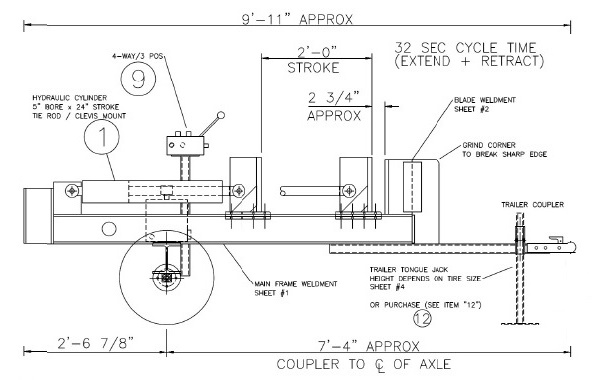Horizontal Log Splitter Plans
For commercial firewood production, a horizontal log splitter is the most popular choice since it allows the users to set up on both sides of the log splitter and feed logs in from one side, and toss split wood to the other side.
 Low
Low Prices!!!
Low
Low Prices!!!
Purchase A Set Of CAD Design Log Splitter Plans Today!
Our Horizontal Log Splitter Plans Include Full Fabrication and Assembly Instructions Including:
|
Select Your Tonnage Model Just $6.95 Each 20 to 50 Ton Log Splitter Plans
Horizontal Log Splitter Plans
pdf plans are delivered to your paypal email address. |
21 Page pdf Horizontal Log Splitter Plans
- CAD Plan Overview
- Table of Contents
- Bill of Materials
- List of Components
- CAD Assembly Plans Overview
- CAD Assembly Plans Elevation View
- Fabrication Instructions
- Hydraulic Circuit Diagram
- Assembly Instructions
- CAD Plan Elevation View
The advantage to horizontal log splitters is that they can be used with less bending over when you are pulling logs from the back of a truck, splitting it, then tossing split wood into the back of another truck.
Another advantage of horizontal log splitters is that they push the log into the splitting wedge instead of the splitting wedge into the log as vertical log splitters do. With vertical units the splitting wedge can get stuck in a log that is not fully split when the hydraulic ram and wedge is retracted
We offer a selection of horizontal log splitter plans in various sizes to allow you to choose the tonnage needed for the type of wood you are splitting.
With soft wood like poplar, you don't need a lot of force. However, with North American Hardwoods like oak, maple, and locust, you may need to put the hammer down with a more powerful unit.
Some commercial horizontal log splitters are set up as stationary machines that operate from a fixed location and are set up to run large loads of logs through them continuously.
Horizontal Log Splitter Operation
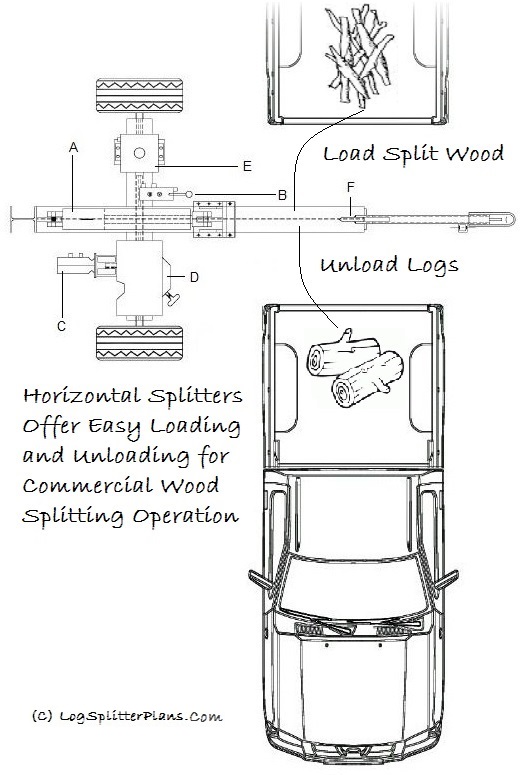 One
of the main reason many consumers choose a horizontal splitter has more
to do with reducing the physical labor involved in the splitter operation
process.
One
of the main reason many consumers choose a horizontal splitter has more
to do with reducing the physical labor involved in the splitter operation
process.
A horizontal splitter is great for reducing the amount of time spent bending over to roll logs into the splitter, and picking up split pieces.
With a horizontal unit you can bring a truck load or tractor bucket load of cut logs right up to the splitter and park it at waist level.
Then you can load logs easily, No bending over constantly and irritating those muscles you may over use in the wood splitting process!
Additionally, this makes it easier for unloading split wood for stacking, drying, and storage.
No doubt that for many of us, less bending over equals less pain!
Generally, where horizontal log splitters fall short is when your working with monster diameter logs that are too heavy to lift at all.
In this case, a vertical splitter where you can roll the log up on it to be split is a better choice.
Horizontal Log Splitter Design Plans
Common style horizontal log splitter plans encompass a portable designed unit that can be attached to the back of a pickup truck, This allows the user the opportunity to tow the splitter around using their trailer hitch, and go to wherever you need to use it. Standard features for this purpose include the tongue, axel, wheels and tires along with any tail light configuration needed for legal transport.
Another style would be a stationary commercial unit that is set up in one fixed area as wood it brought to it to be split and hauled away to be stacked or sold.
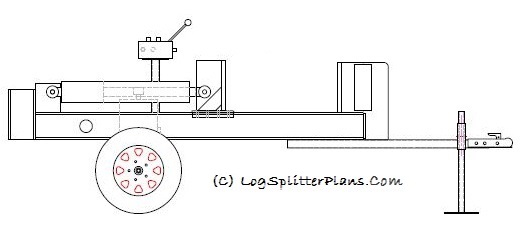
The rest of the basic structure for the Log splitter includes the main frame structure along with the hydraulic components needed to make one of these workload units do all the hard labor for you. The operating parts consist of the main log splitter components.
With the hydraulics of a horizontal powered log splitter, the ram pushes the log foot plate forward to jam the log into the metal splitting wedge which forces the wood to split.
Tools and Talents Needed To Build A Log Splitter
Building a hydraulic log splitter is a project that requires some metal working skills, including some welding and cutting fabrication skills. In all it's not a real difficult job to build a horizontal log splitter. And as long as you have the technical skills to operate the equipment to build it, the ingenuity should be in your arsenal of talents as well!
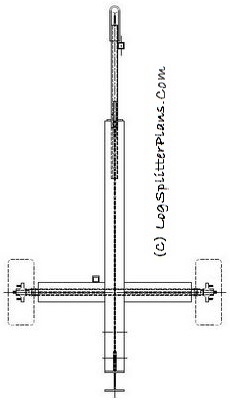
Tools required will include a welder, cutting torch or plasma cutter, and a tape measure to insure your not ball-parking those measurements.
If you have those tools, no doubt you have the rest of the weapons needed to slap a powerful wood splitting contraption together in no time.
Most of the time a home built log splitter comes together with a smorgasbord of odds and ends that happen to be laying around in your work shop waiting for a purpose that they can be applied to.
What's most important is that you always keep safety in mind when constructing your wood splitter. Never vary from properly rated materials to handle the pressure and everyday abuse intended for your log splitter, not only from wood splitting, but also from being towed around.
Remember, the main beam will always be taking the brunt of the punishment, so make sure you have the proper size and strength in your main I-beam to handle the tonnage rating of your hydraulic pump, and cylinder push rod force.
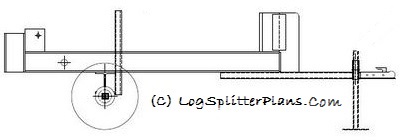
So now it's time to pick yourself up a set of bargain priced log splitter plans from the column on the right and get to fabricating. Winters can be mighty cold, and stocking up on firewood will be a breeze once you fire up your hand built "by you" log splitter.
So put down that axe and maul, and get to fabricating!!!
